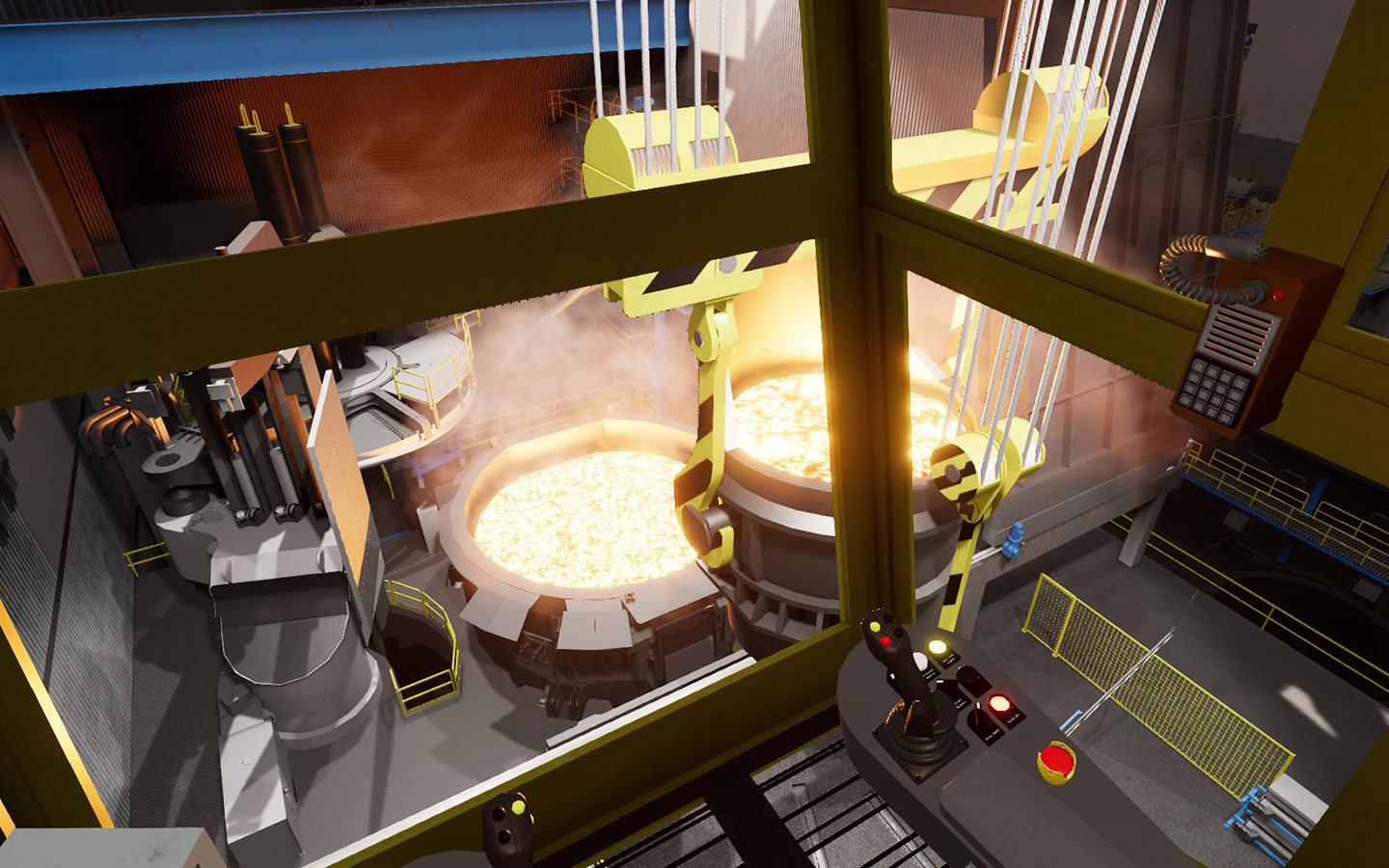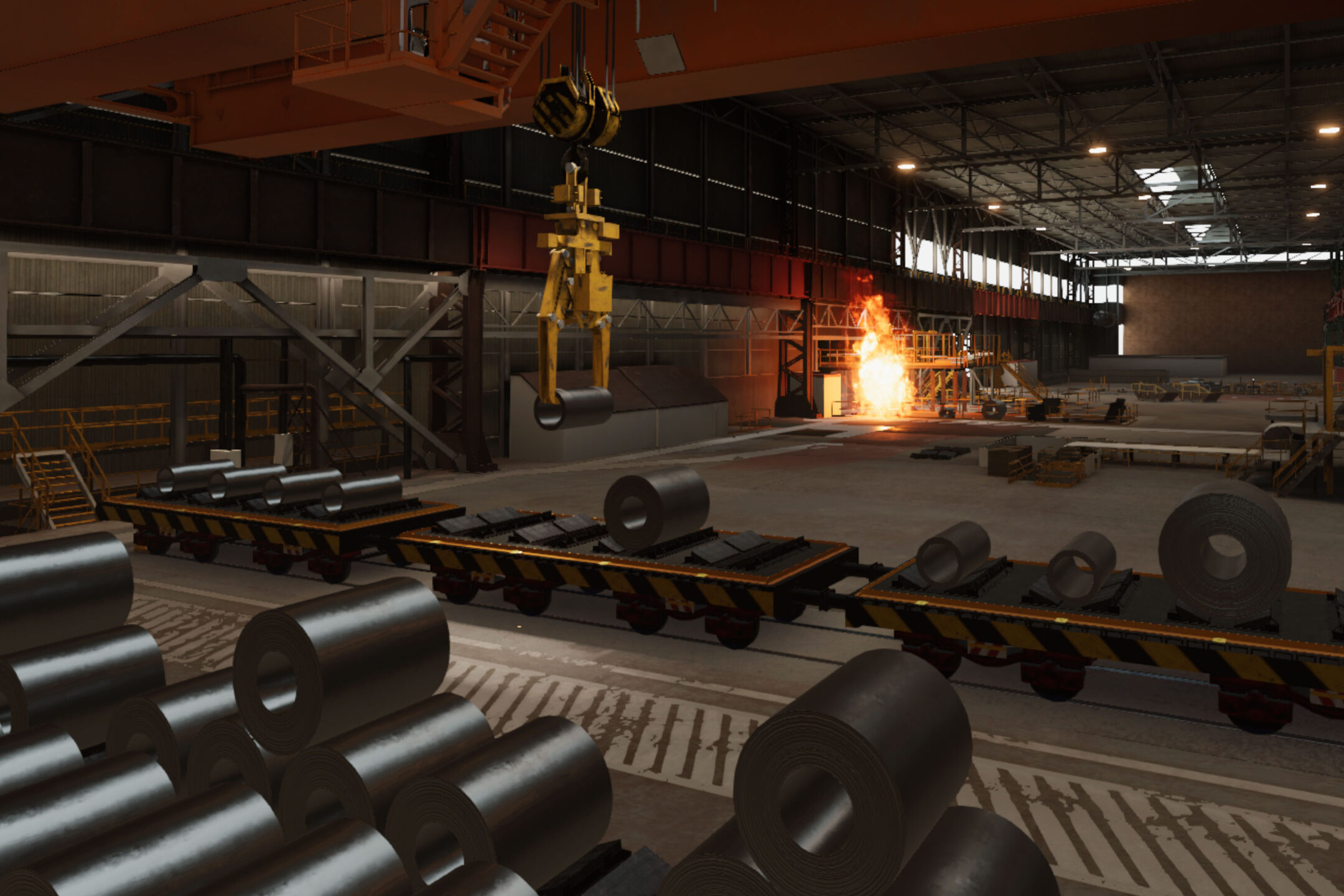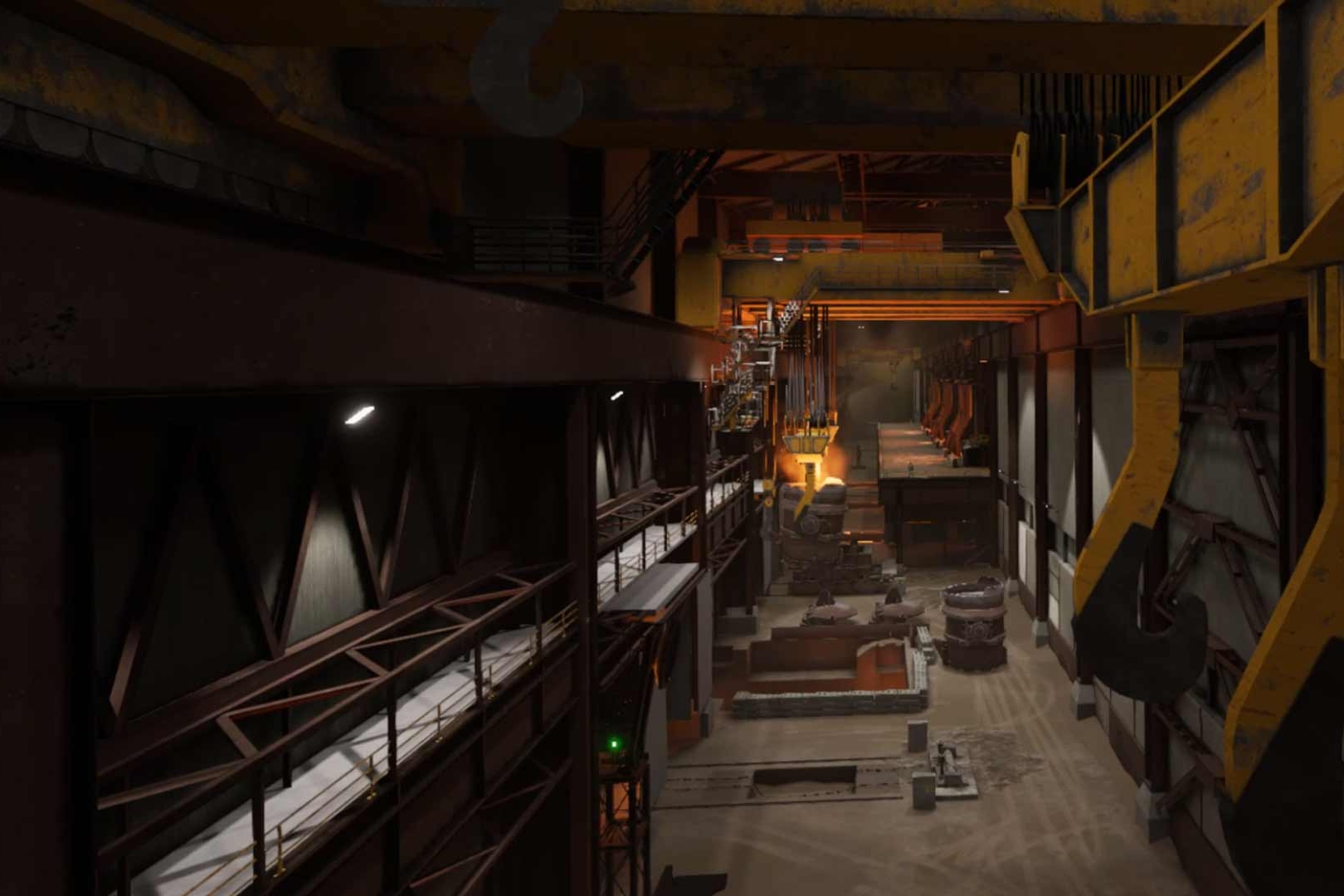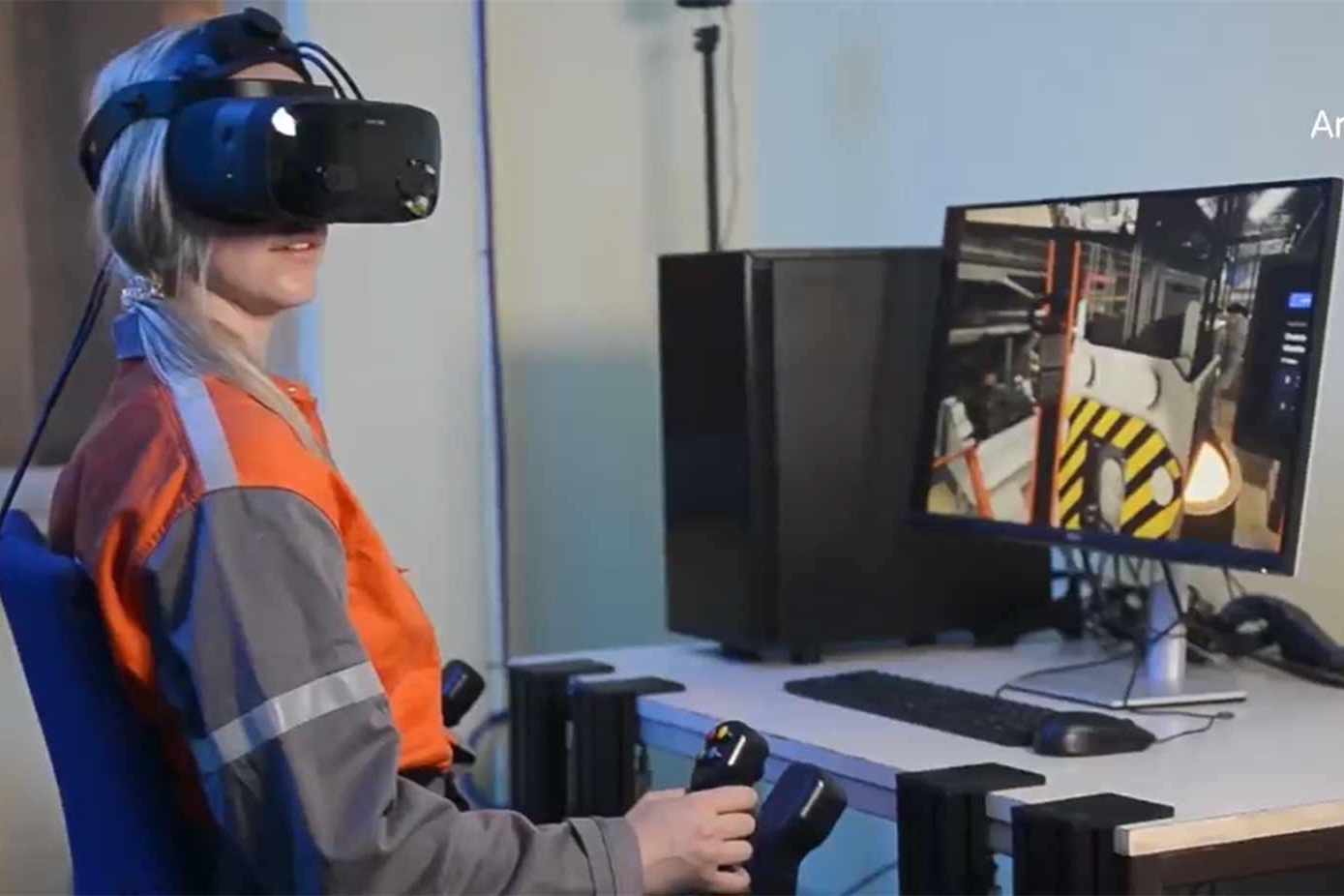The start of the Algoma Steel EAF crane training simulator
In a bold move towards modernization and sustainability, Algoma Steel is undertaking a significant transformation to lower its carbon footprint. As part of this effort, the company is transitioning from an integrated steel production model to a scrap recycling operation. Central to this transformation is the construction of a new Electric Arc Furnace (EAF) facility, with the future operations of the facility being overseen by Jon Whittington, General Manager – EAF Operations. To ensure the seamless integration and operation of this new facility, Algoma Steel has collaborated with Steel Sim VR for the development of an EAF crane training simulator.
Key advantages for a EAF crane training simulator
Enhanced Safety
Operators can learn and practice in a risk-free virtual environment, reducing the likelihood of accidents.
Cost Savings
Early identification of design flaws through simulation prevents costly modifications after construction.
Operational Efficiency
Reduces the time required for operators to become proficient with new equipment.
Procedure Development
Facilitates the creation of best practices and operational procedures before the actual equipment is in use.
Comprehensive Training
Allows for realistic and interactive training scenarios, improving overall readiness.
Video Steel Sim VR and Algoma EAF crane training simulator
The Need for EAF and Advanced Training Tools
“Algoma is on a path to significantly reduce our carbon footprint and broaden our environmental impact,” explained Whittington. The transition to the EAF facility is a pivotal element of this strategy, aiming to not only lower emissions but also enhance the company’s product offerings and market volume. With this new facility, however, came the need for advanced training solutions. “We have numerous overhead cranes, many of which are not AC joystick controlled, and none match the scale of the new cranes,” Whittington highlighted.
The Steel Sim VR EAF crane training simulator simulator was chosen to address this challenge, allowing operators to build muscle memory and understand the nuanced movements required for the new equipment before it is operational.
The Role of the EAF crane training simulator
Whittington elaborated on the critical role of the simulator, stating, “The simulator helps us shorten the learning curve, enabling operators to be competent from day one.” This proactive training approach is designed to avoid the typical trial-and-error period that can result in operational delays and equipment damage. The virtual reality environment allows operators to familiarize themselves with the crane operations in a risk-free setting.
Design optimization and cost savings
The creation and implementation of the Steel Sim VR simulator were streamlined and efficient. Algoma Steel collaborated with Steel Sim VR, to provide detailed models and scenarios that accurately reflected the real-world operations of the new facility. “The development was smooth,” said Whittington. “We provided scenarios and requirements, and the team translated those into highly interactive simulations.”
This collaborative process not only ensured the simulator’s effectiveness but also led to significant cost and time savings. “The simulator highlighted a few scenarios that didn’t work as planned, allowing us to make necessary adjustments during construction,” Whittington noted. These early identifications of design flaws helped Algoma Steel avoid costly post-construction modifications and ensure that the EAF facility was optimized for efficiency from the outset.
Still from VR Simulator

Training and Early Feedback
The simulator has been delivered and is already being used to train key personnel. “We designated four operators as ‘train the trainer.’ These individuals received additional training to ensure they can effectively train others,” Whittington shared. The feedback from both operators and supervisors has been overwhelmingly positive. “Everyone who has tried the simulator has praised its effectiveness,” he added. The immersive experience of the VR environment helps trainees understand the EAF operations comprehensively.
Future Enhancements and Benefits
Looking ahead, Whittington sees further potential for the EAF crane training simulator. Algoma Steel plans to expand its capabilities by incorporating dual operator training scenarios, allowing for more realistic and comprehensive training sessions. “This setup will enable us to improve feedback and refine operational procedures based on the virtual reality scenarios,” Whittington explained.
The benefits of the Steel Sim VR simulator are multifaceted. It enhances safety by providing operators with a thorough understanding of the crane operations in a controlled environment. It reduces the likelihood of equipment damage and operational delays by allowing operators to practice and perfect their skills virtually. Additionally, it aids in developing best practices and operational procedures before the actual equipment is in use.
Leveraging Data for Continuous Improvement
In addition to the advanced training capabilities of the Steel Sim VR simulator, Algoma Steel uses the raw data that it provides. “Something that we have done on this end is to get into the database and mine the data the Steel Sim VR platform provides,” explained Whittington. By using Power BI, Algoma Steel builds out weekly reports that provide detailed insights into the training progress of their operators.
Cabin view footage, shot through Varjo XR-4

Train the Trainers Program
The data reports have shown significant engagement from the designated ‘Train the Trainers’ personnel. These top four operators have accumulated substantial knowledge and hands-on experience with the simulator, positioning them to effectively train their peers. “They’ve really built up some knowledge,” Whittington acknowledged, highlighting the success of this focused training approach.
Achieving Training and Operational Goals
Looking forward, Whittington is confident that the combination of VR simulation and data-driven analysis will support Algoma Steel in achieving its training and operational goals. “Doing the hard work now of getting everybody through on the training will pay off significantly,” he concluded.
A step forward with the EAF crane training simulator
The adoption of simulation training marks a significant step forward for Algoma Steel. “It has opened everyone’s eyes to the possibilities of this technology,” Whittington remarked. Simulation training offers a proactive approach to operational readiness, allowing companies to address potential issues during the design and construction phases, ultimately leading to more efficient and safer operations.
As Algoma Steel continues to lead in innovation and sustainability, the integration of the Steel Sim VR simulator exemplifies its commitment to excellence and forward-thinking strategies in the steel industry.
For more details about this customer story, please contact us.
More from our blog
15 April 2025
The Impact of Simulation Training at ArcelorMittal Gent
How Simulation Training Is Revolutionizing Crane Operations In the world of…
20 November 2023
Tata Steel is paving the way for a safer future for industrial training.
Article credits to Varjo – read original here Shaping the future of steel…
27 June 2022
Crane simulators for ArcelorMittal Gent as a high-tech training tool
Onboarding challenges The job of onboarding new crane operators is becoming…


